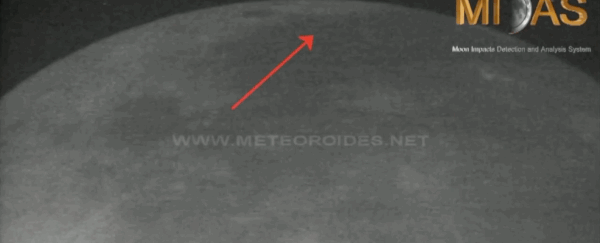There are a lot of rocks up there in space, whizzing about and occasionally smacking into other objects. Here on Earth, our atmosphere burns up most of the pebbles that come hurtling our way.
Not so with the Moon - and ESA telescopes caught two impacts on film just 24 hours apart.
The two impacts, on July 17 and 18, were likely caused by debris from the Alpha Capricornids meteor shower, an annual event that occurs when Earth and the Moon pass through the tail of comet 169P/NEAT.
And, while they look pretty small, when you consider that each of those impact flashes was caused by an object about the size of a walnut, it gets pretty cool.
The event is called a transient lunar phenomenon, and they're pretty difficult to study, simply because if you blink, you'll miss them. But they actually provide valuable information about how many rocks are flying around out there.
That's why a program called the Moon Impacts Detection and Analysis System (MIDAS) is harnessing the power of three observatories across Spain to identify the flashes caused by meteoroid impacts on the surface of the Moon.
"By studying meteoroids on the Moon we can determine how many rocks impact it and how often, and from this we can infer the chance of impacts on Earth," explained astrophysicist Jose Maria Madiedo of the University of Huelva in Spain.
To make these detections easier, the researchers always look for flashes on the "dark" side of the Moon, wherever it is facing away from the Sun and therefore in shadow. The impact flashes are a lot easier to see in this shadowed region.
During the new Moon and crescent phases, this dark side is visible from Earth, which means it can be observed using Earth telescopes.
You can find out more at the ESA page.
